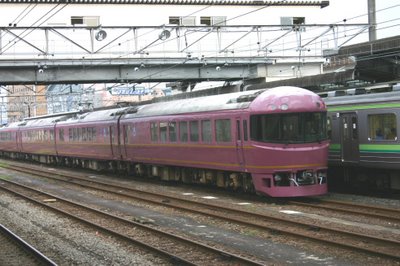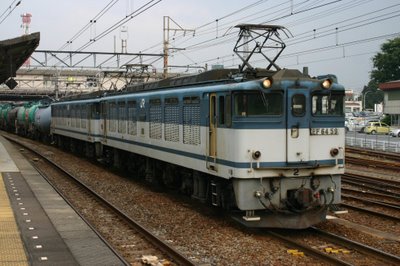Going for a trip?

JR East has a number of party trains that are in regular demand for company outings and the like. Most of them are built on the 'mechanics' of 485 EMU tokkyu express units. Here's one of them in delightful honeymoon style pink - at this end trailer 484-3.
Hard to imagine six or eight car EMU trains making a revenue earning living like this anywhere else in the world. But in Japan company and other group outings are popular and you go with colleagues, not you wife or husband. The trains usually are fitted internally with long tables and chairs both sides, and en route revellers are served with bento and beer. Also there are plenty of nice locations that can be reached 'under the wire'
Well, I'm off on a trip myself now, no 'Railway Roundabout' from me for a day or two although I see Norman is back now. My next entries will be from Lancashire. Maybe I'll be gricing Preston or Durham station at the weekend!




